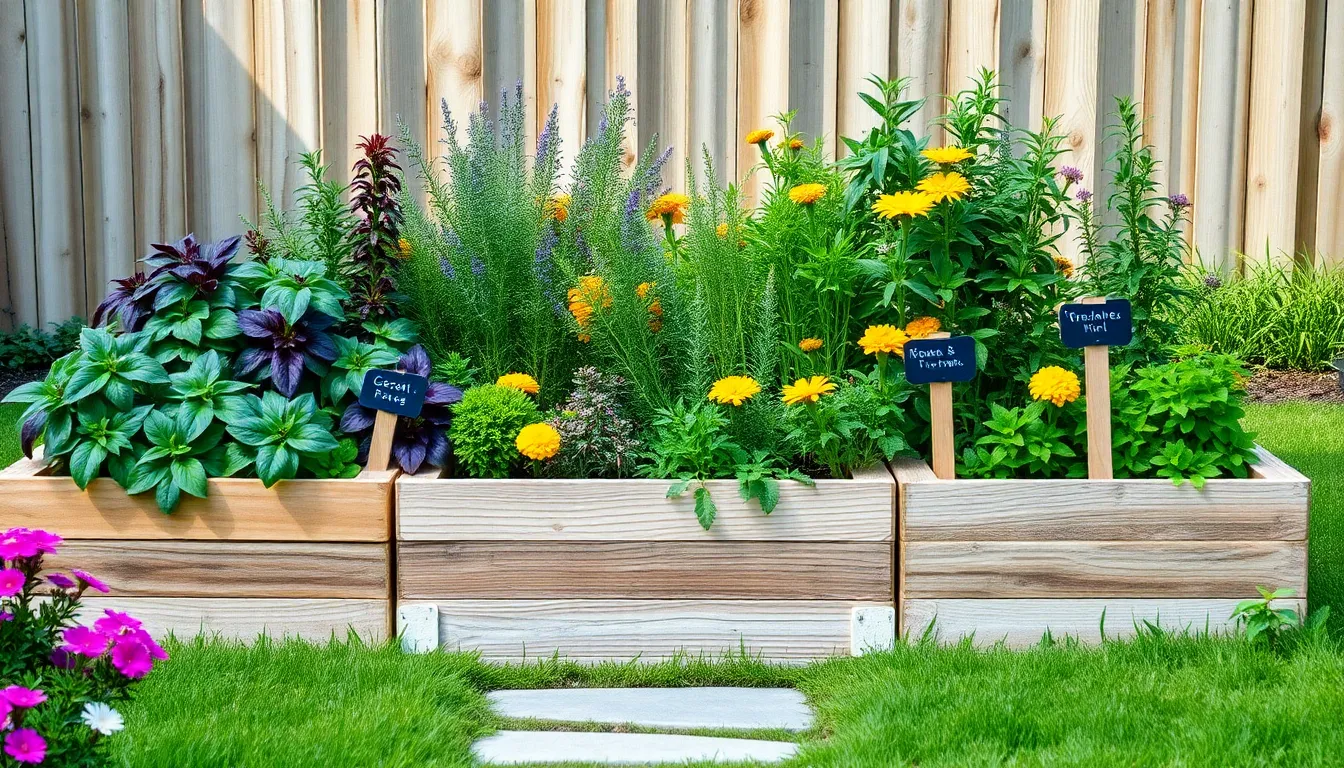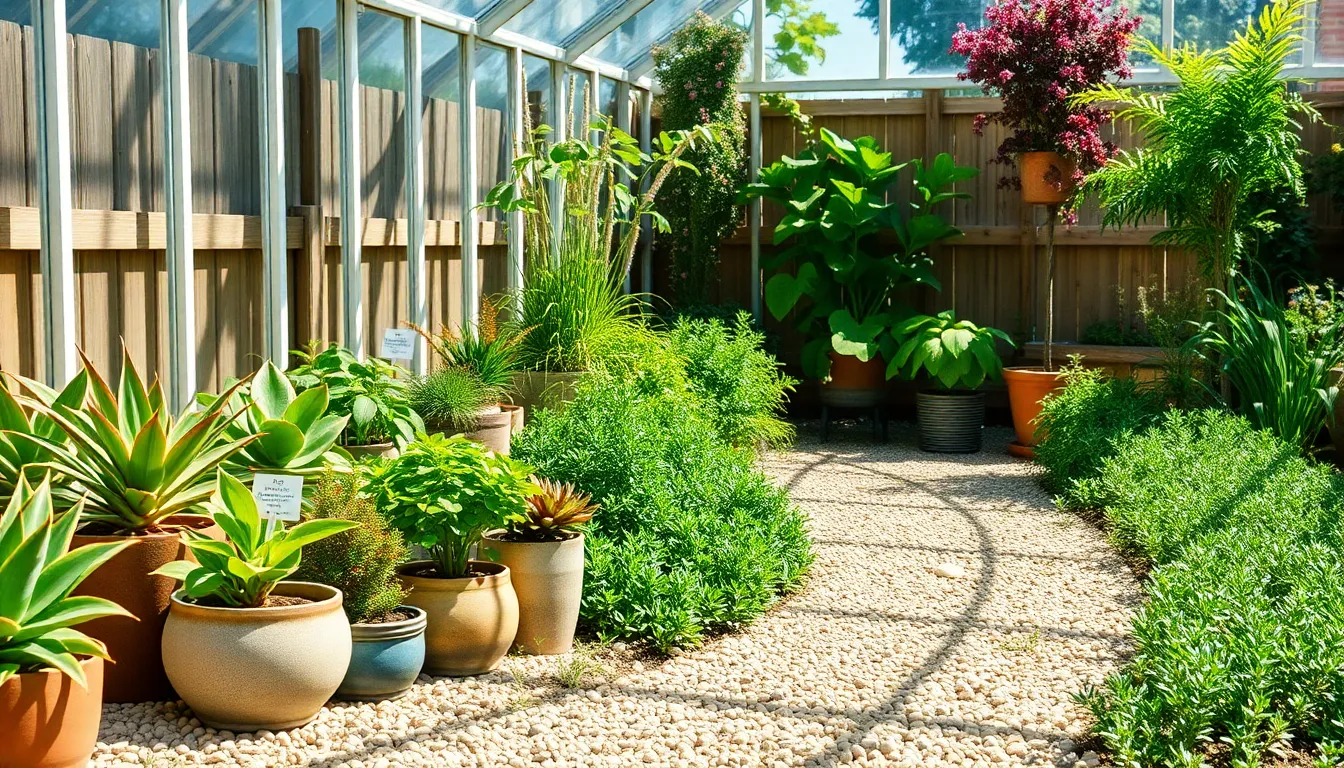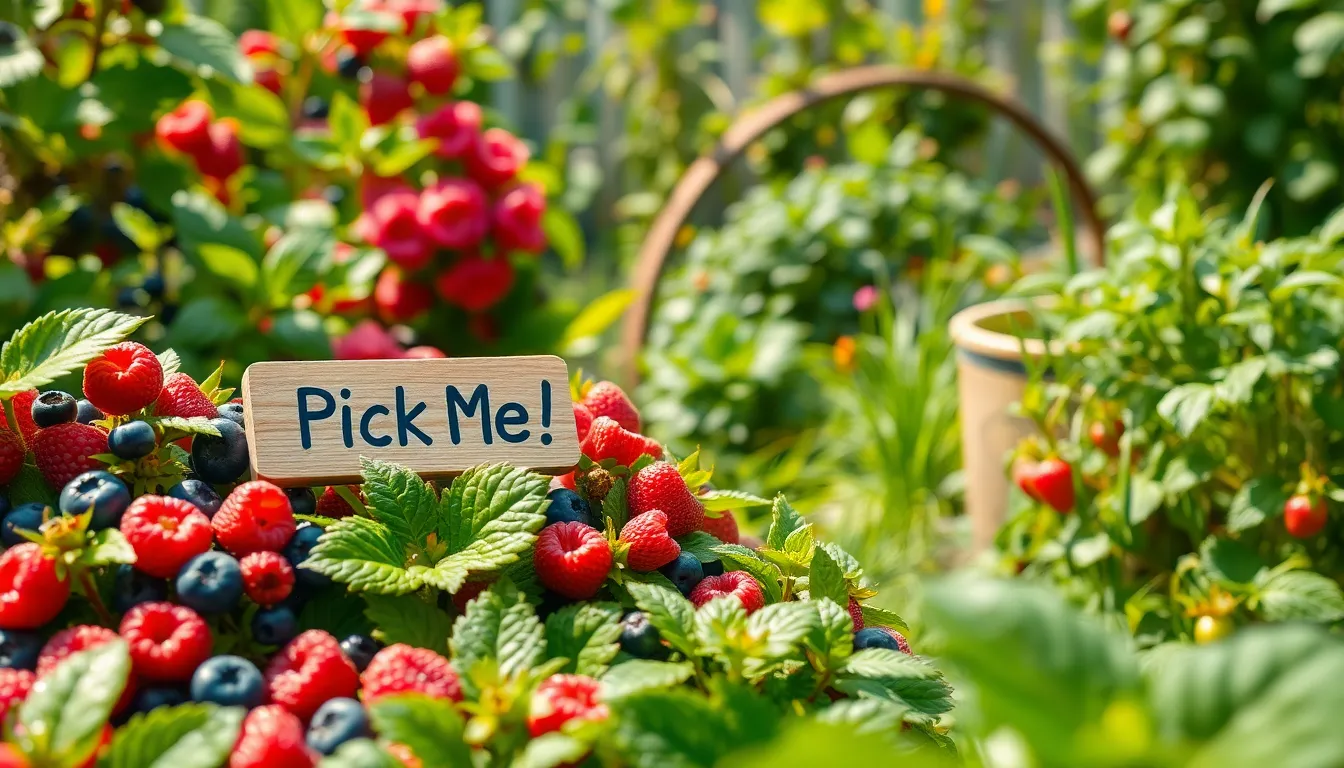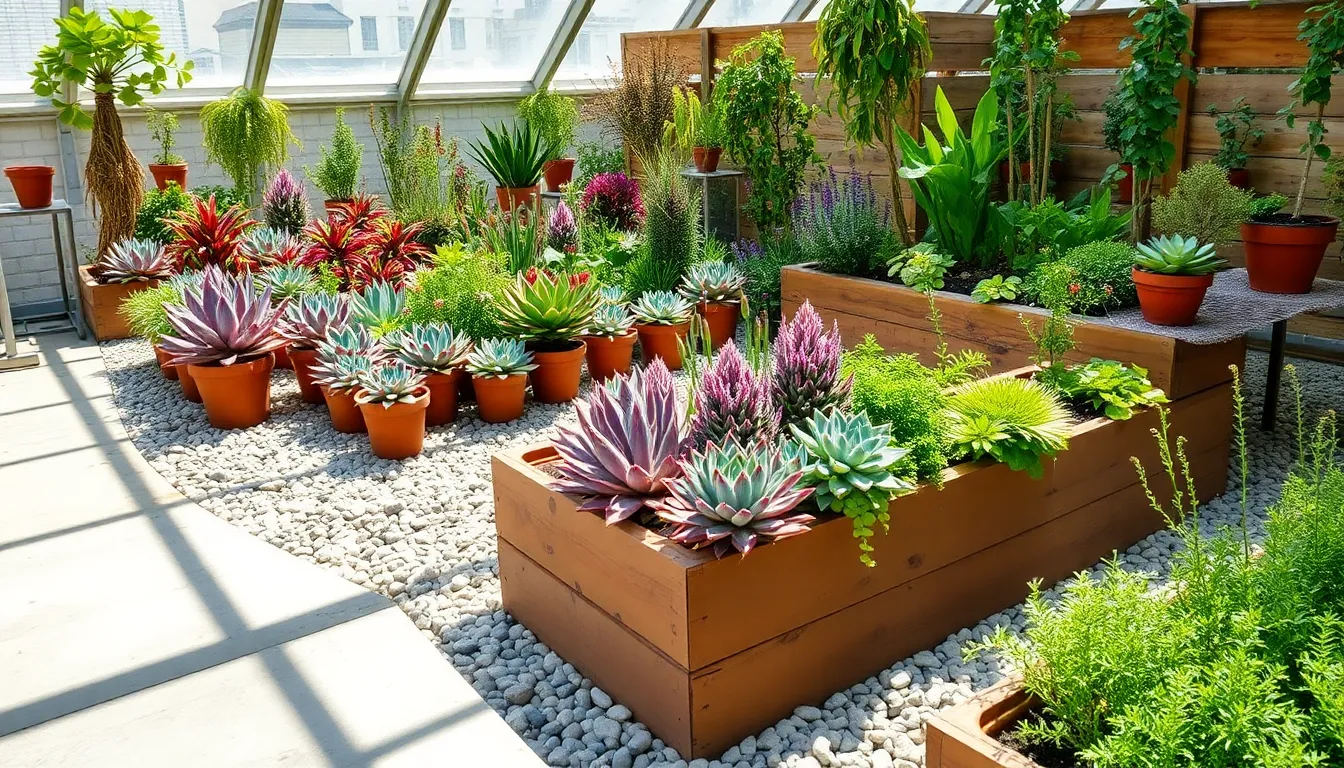Gardening is a journey filled with discovery, joy, and the serene beauty of nature right at your fingertips. Whether you’re a budding enthusiast planting your first seeds or a seasoned gardener with dirt under your nails, our “11 Beautiful Herb Garden Tips” guide is designed to elevate your gardening adventure and enhance your green space with aromatic, flavorful herbs.
These tips are your gateway to transforming any patch of earth into a lush, productive herb sanctuary. With expert insights and practical suggestions, you’ll find ways to maximize your garden’s potential, ensuring bountiful harvests and aesthetic appeal. By the end of this guide, you’ll feel empowered to cultivate a thriving herb garden that not only delights your senses but also enriches your culinary experiences.
Choose Sun-Loving Herb Varieties
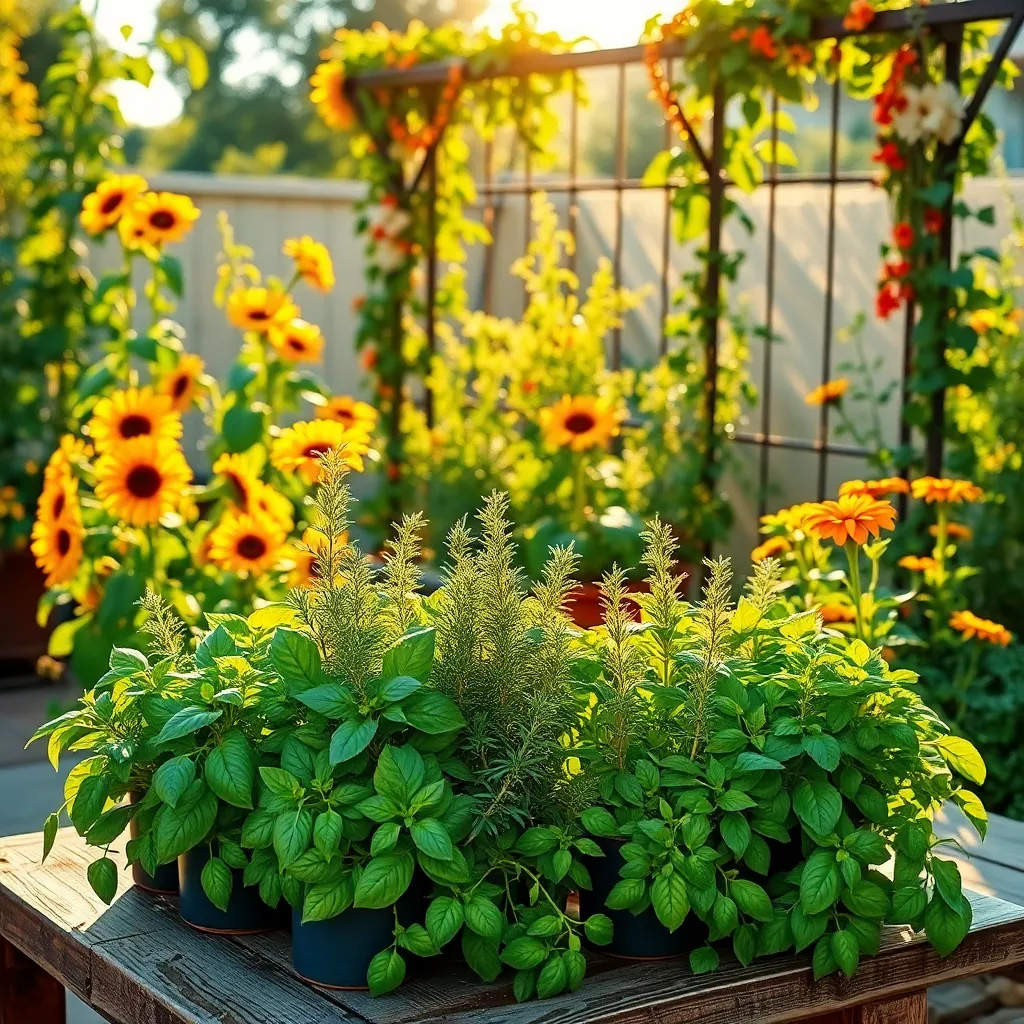
When choosing sun-loving herb varieties, consider classics like basil, rosemary, and thyme. These herbs thrive in full sun, which means they need at least six to eight hours of direct sunlight each day.
Ensure your soil is well-draining to prevent waterlogging, which can lead to root rot. You can improve drainage by mixing in sand or perlite, especially if your soil is clay-heavy.
Water these herbs deeply but infrequently, allowing the top inch of soil to dry out between waterings. This encourages deeper root growth and robust plants.
For those who have already mastered basic herb care, consider rotating your sun-loving herbs’ location periodically to ensure optimal light exposure throughout the growing season. This advanced technique can help prevent diseases and pest infestations by giving your plants a fresh start in new soil.
Plant in Well-Draining Soil
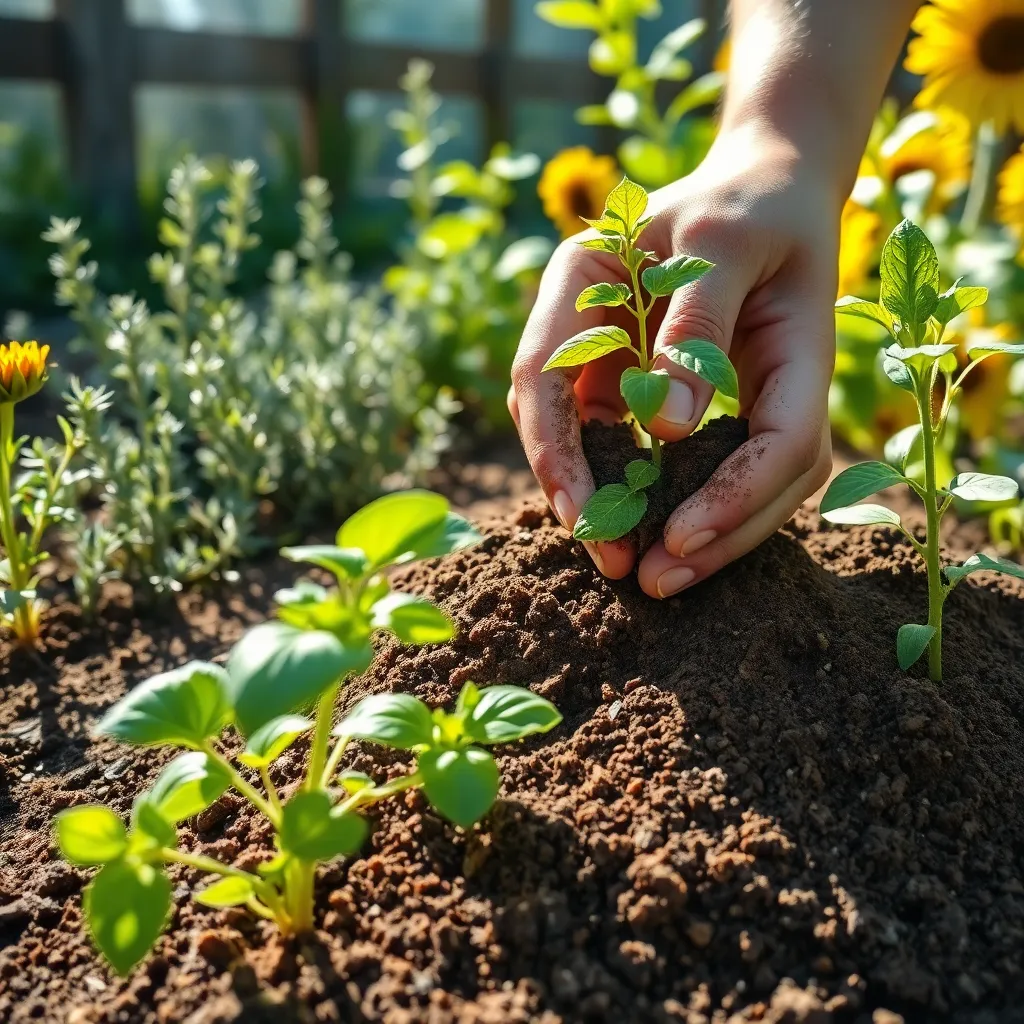
To ensure your herb garden thrives, it’s essential to plant in well-draining soil. Herbs like rosemary, thyme, and oregano prefer soil that doesn’t retain excess moisture, which can lead to root rot.
Improve drainage by mixing sand or perlite into your soil, especially if it’s naturally heavy or clay-based. This modification helps excess water escape efficiently, providing the right environment for your herbs to flourish.
Consider using a raised bed or containers if your garden soil tends to hold water. These options allow you to control the soil composition easily, ensuring your herbs have the perfect growing medium.
For those seeking a more advanced approach, create a soil mix with equal parts compost, topsoil, and coarse sand. This blend not only enhances drainage but also provides your herbs with essential nutrients as they grow.
Group by Watering Needs
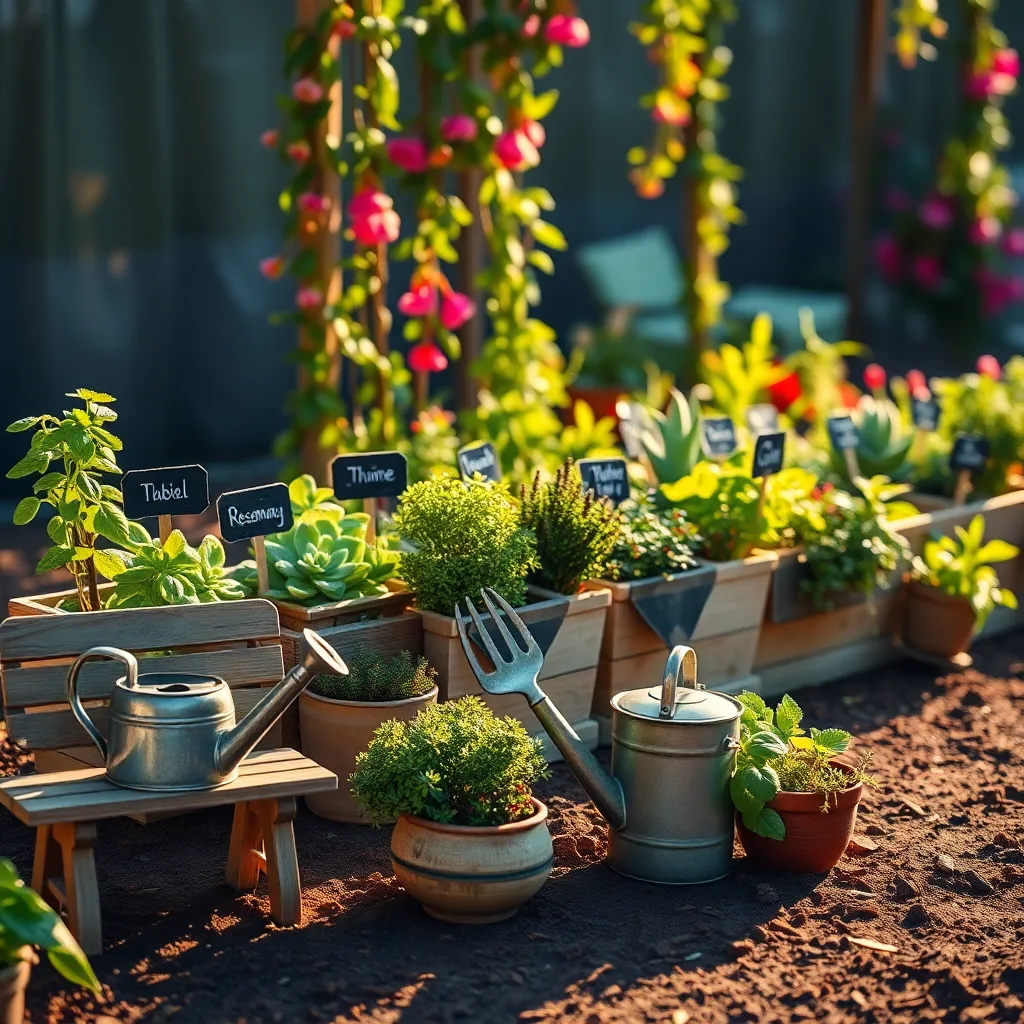
Grouping herbs by their watering needs is an effective way to streamline garden maintenance. Organize your herbs into high, moderate, and low water requirement groups to ensure each plant receives the appropriate amount of moisture.
For herbs that thrive with consistent moisture, like basil and mint, consider planting them together in areas that receive regular watering. These herbs prefer well-drained soil that retains moisture, so adding organic matter like compost can be beneficial.
Moderate water requirement herbs such as oregano and thyme can be grouped separately. These plants do well in soil that dries out slightly between waterings, making them ideal for slightly elevated or well-drained sections of your garden.
For herbs that prefer dry conditions, like rosemary and sage, select a location with good drainage and full sun. These herbs thrive in sandy or gritty soil, which prevents root rot by allowing excess water to drain away efficiently.
Incorporate Companion Planting Techniques
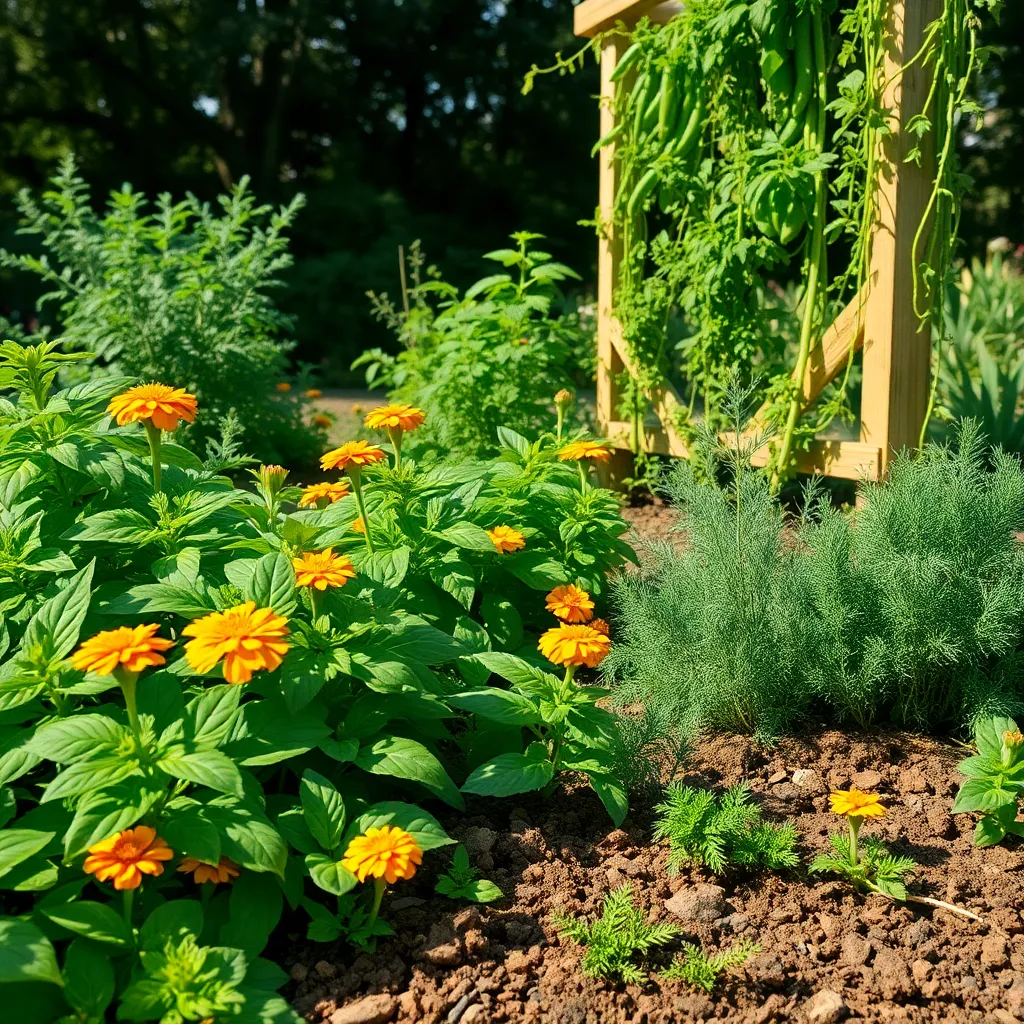
Companion planting involves placing specific plants in proximity to enhance growth and deter pests, making it a key strategy for a thriving herb garden. For instance, pairing basil with tomatoes can improve the flavor of your tomatoes while keeping pests at bay. Consider using marigolds around your herb garden as they repel nematodes and other harmful insects. This practice is beneficial for beginner gardeners who wish to maintain a healthy, low-maintenance garden.
Integrating companion planting requires understanding the needs of your herbs and their natural allies. Thyme is known to attract beneficial insects and can be planted near rosemary to help deter cabbage worms. For those with more experience, try experimenting with different combinations to find what works best for your specific environment. Remember that herbs like mint can be invasive, so it’s best planted in containers to avoid overpowering other plants.
Begin by identifying herbs that share similar sunlight and soil preferences to ensure compatibility. Many Mediterranean herbs such as oregano, sage, and lavender thrive in well-drained soil and lots of sunlight, making them ideal partners. To maximize the benefits, alternate rows of herbs like dill and cilantro, which can boost growth and keep pests away. Documenting your results can help you refine your companion planting strategy over time.
Advanced gardeners might explore planting herbs that improve soil health, such as clover or chamomile, which can enhance nitrogen content and attract pollinators. Consider adding comfrey as a natural fertilizer; its deep roots draw nutrients from the soil, benefiting nearby plants. Whether you’re a novice or a seasoned pro, companion planting offers a sustainable way to improve your herb garden’s health and productivity. The more you experiment, the more you’ll learn about the beneficial relationships between plants.
Use Raised Beds for Control
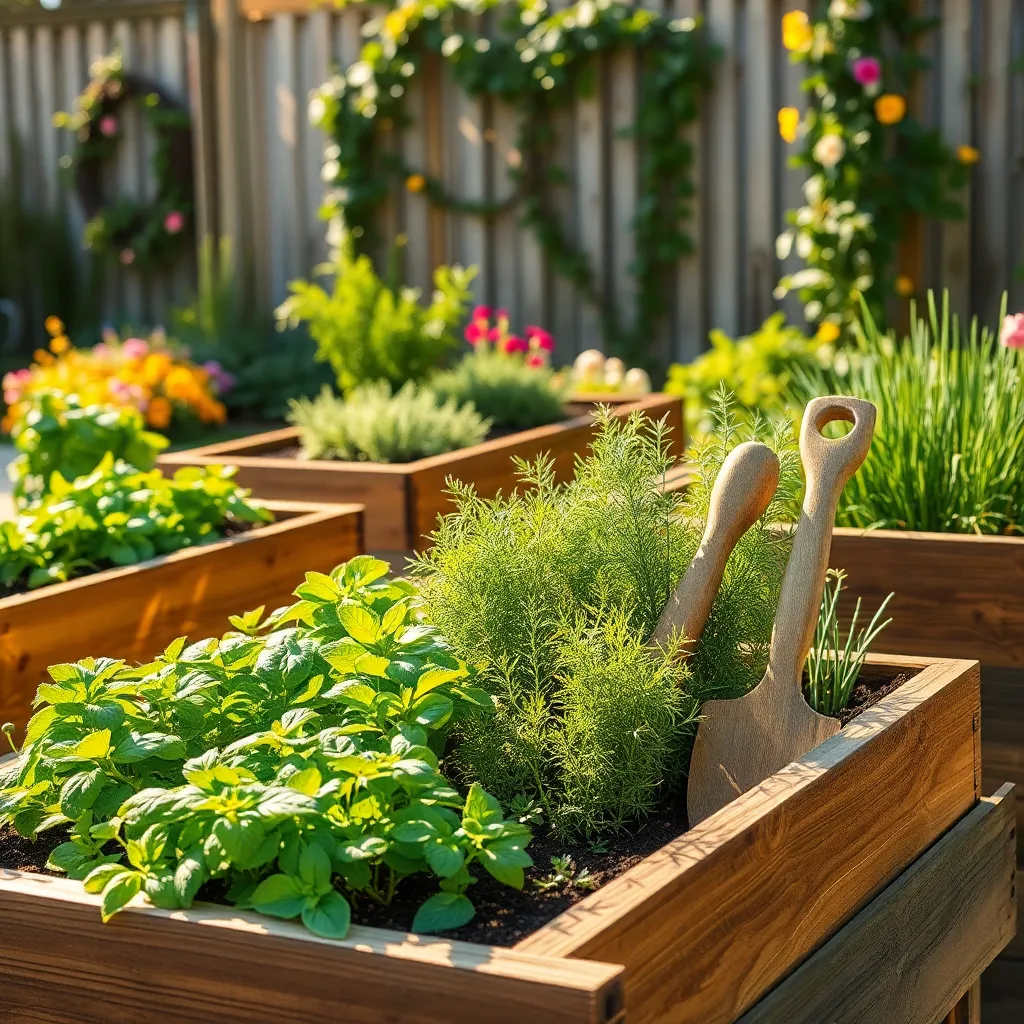
Using raised beds in your herb garden offers greater control over soil conditions and drainage. This is especially beneficial if your native soil is poor or has drainage issues, as raised beds allow you to start with a fresh, ideal soil mix.
Start by filling your raised bed with a high-quality mix of well-draining soil, compost, and organic matter. Aim for a soil depth of at least 12 inches to accommodate root growth, ensuring your herbs have ample space to thrive.
Raised beds also make it easier to manage pests and weeds. By elevating your garden, you create a natural barrier that reduces the likelihood of soil-borne pests and diseases impacting your herbs.
For those in cooler climates, raised beds can warm up more quickly in the spring, extending your growing season. You can also install a simple row cover or hoop house over your raised bed to protect your herbs from unexpected frosts.
Advanced gardeners might consider adding a layer of mulch to their raised beds to help retain moisture and regulate soil temperature. This can be especially useful during hot summers, reducing the frequency of watering and keeping your herbs healthy.
Trim Regularly for Bushier Growth
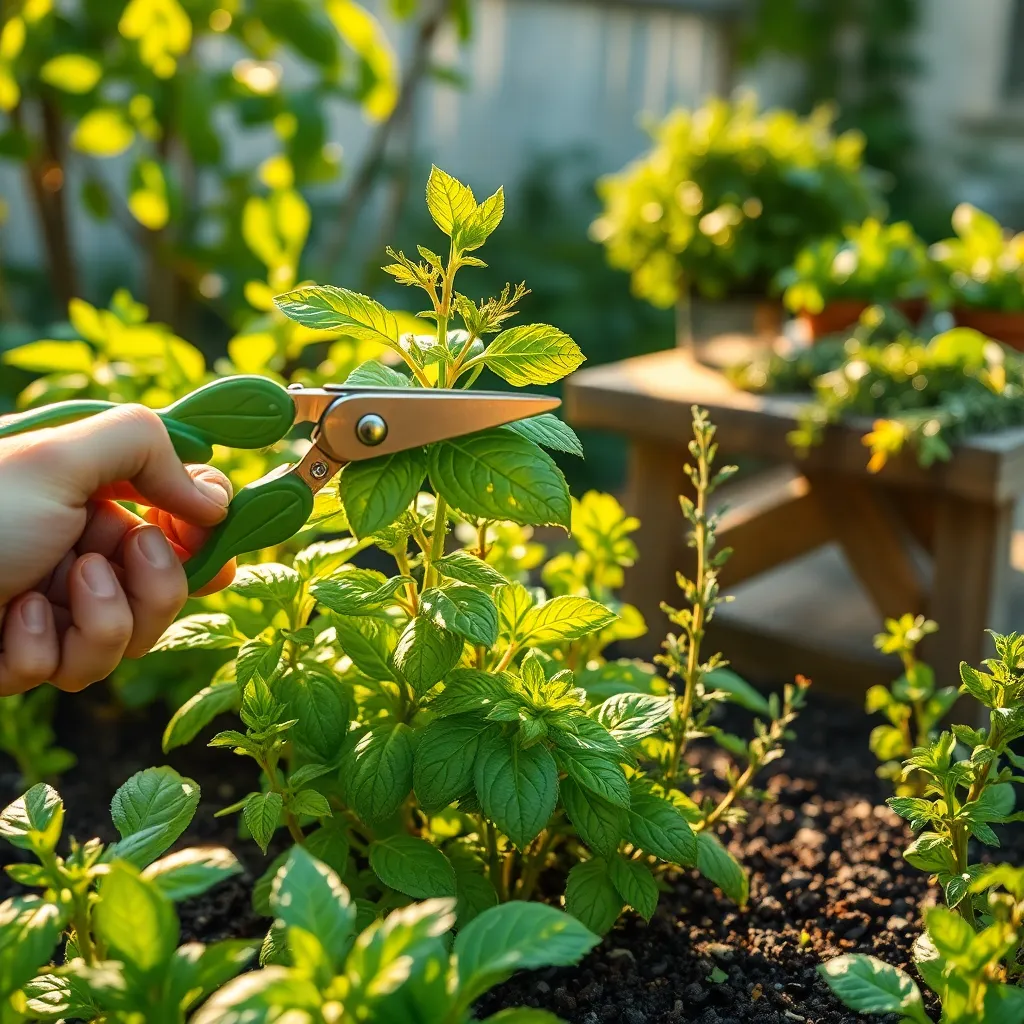
Regular trimming is essential for promoting bushier growth in your herb garden. By pinching back the tips of your herbs, you encourage the plants to branch out, resulting in a lush and full appearance.
For beginners, start with herbs like basil, mint, and oregano, which respond well to regular trimming. Use clean, sharp scissors or pruning shears to prevent damage and disease.
Experienced gardeners can take trimming a step further by incorporating the cuttings back into the soil as a natural compost layer. This not only enhances soil nutrition but also keeps your garden waste-free.
Trim your herbs in the early morning when they are most hydrated. This practice helps the plants recover quickly and reduces the risk of wilting.
For optimal growth, aim to trim herbs every two to four weeks during the growing season. Avoid trimming more than one-third of the plant at a time to prevent stress and ensure continued healthy growth.
To encourage even growth, rotate plants after trimming to ensure all sides receive equal sunlight. This technique helps prevent plants from becoming leggy and sparse.
Rotate Herbs to Avoid Pests
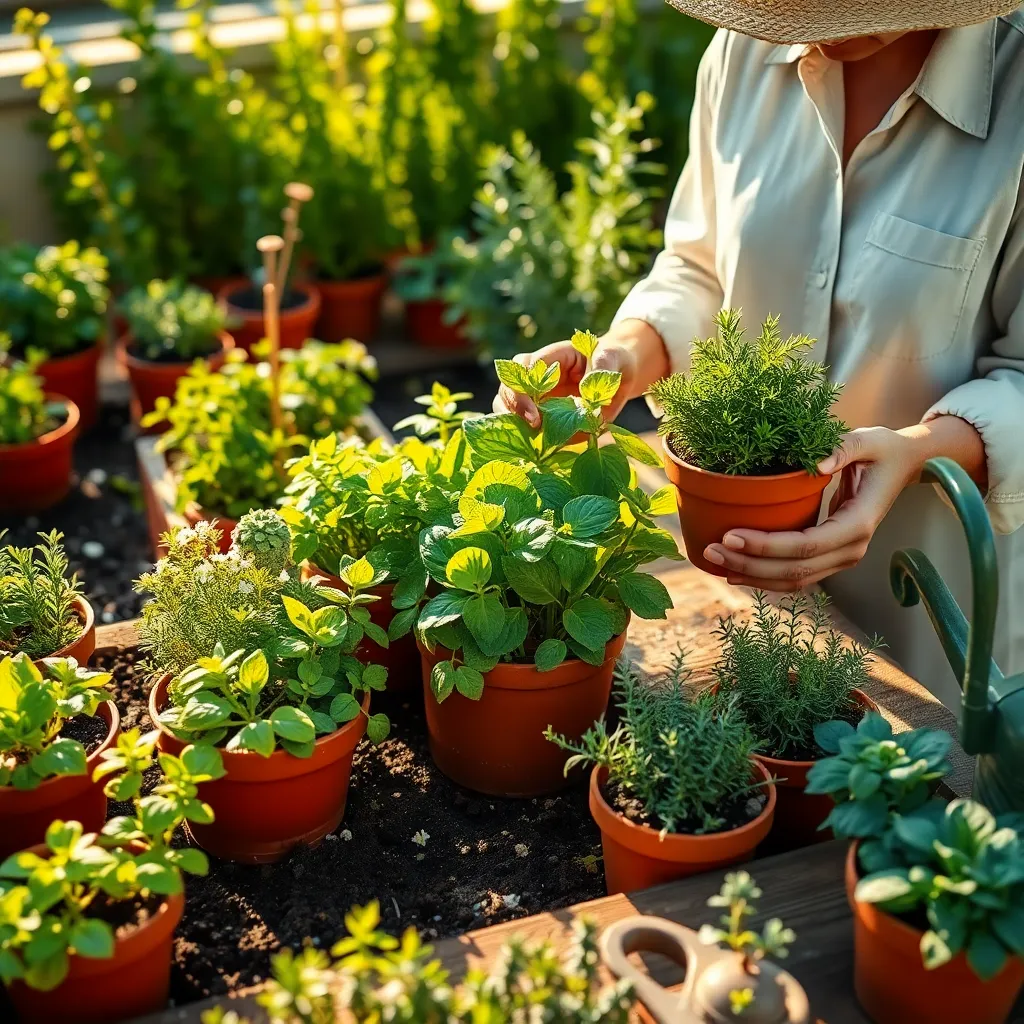
Rotating herbs in your garden is a simple yet effective way to keep pests at bay. By changing the location of your herbs each season, you disrupt pest life cycles and reduce soil-borne diseases.
Start by understanding the growing requirements of your herbs to select the best new location for them. For instance, most herbs such as basil, rosemary, and thyme thrive in well-drained soil with plenty of sunlight, so make sure the new spot meets these conditions.
To get started, map out your garden and plan where each herb will go in the coming season. This not only helps in pest control but also allows you to improve soil health by preventing nutrient depletion in one area.
For advanced gardeners, consider grouping herbs with similar needs to optimize growth conditions. This strategy involves planting Mediterranean herbs like oregano and sage together in a sunny, dry area and more moisture-loving herbs like mint in a shadier, damper spot.
Additionally, keep a gardening journal to track the movement of your herbs and monitor pest activity. Over time, this will help you refine your rotation plan and achieve a more resilient and productive herb garden.
Apply Organic Mulch to Retain Moisture
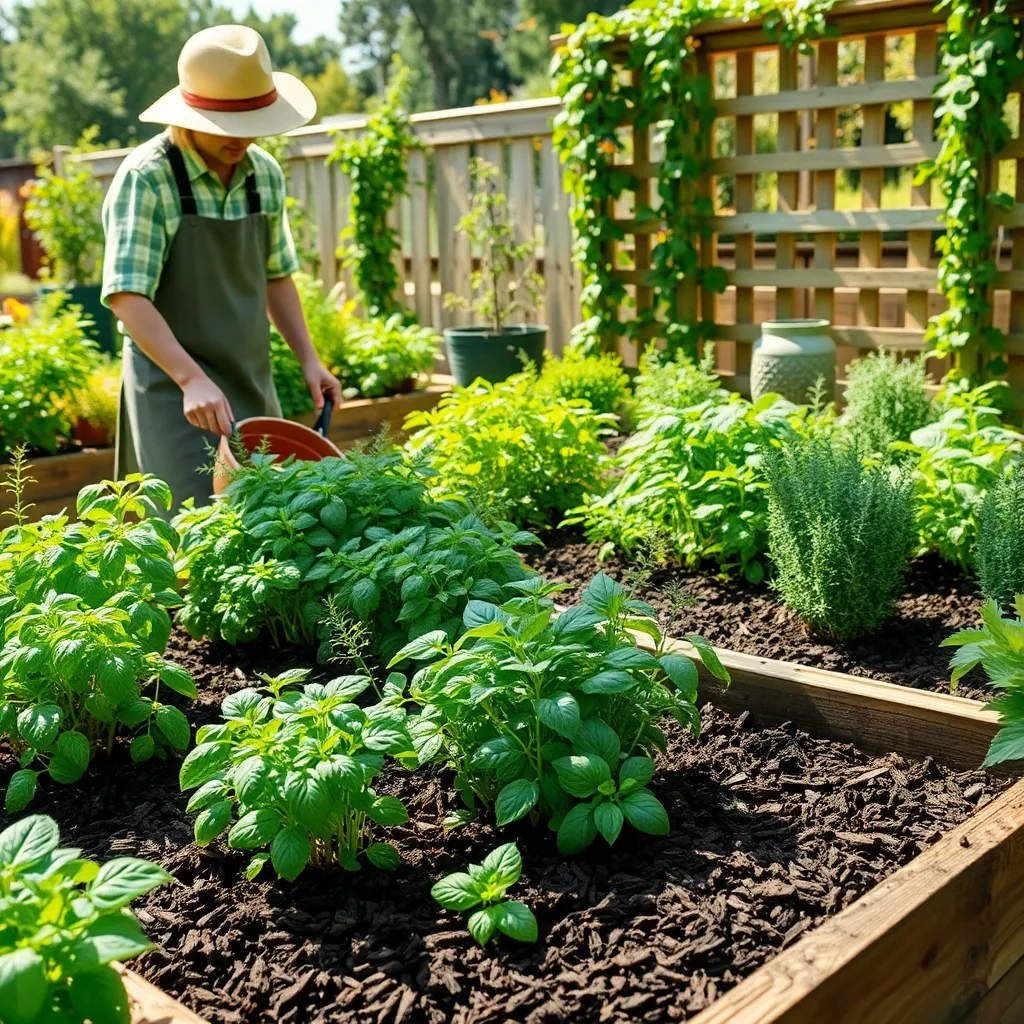
Applying organic mulch to your herb garden is a simple yet effective way to retain moisture in the soil. This practice not only helps in conserving water but also protects your plants during hotter months when evaporation rates are high.
Organic mulches such as straw, shredded leaves, or grass clippings are excellent choices. They decompose over time, enriching the soil with valuable nutrients and improving its structure, which is beneficial for herbs.
For beginners, spreading a 2-3 inch layer of mulch around your herbs can significantly reduce the need for frequent watering. Make sure to keep the mulch a few inches away from the stem of the plants to prevent rot and pest issues.
Advanced gardeners might experiment with different mulch types, such as pine needles or cocoa hulls, depending on the specific needs of their herbs. For example, pine needles can help acidify the soil slightly, which is favored by herbs like mint and oregano.
Install Drip Irrigation for Efficiency
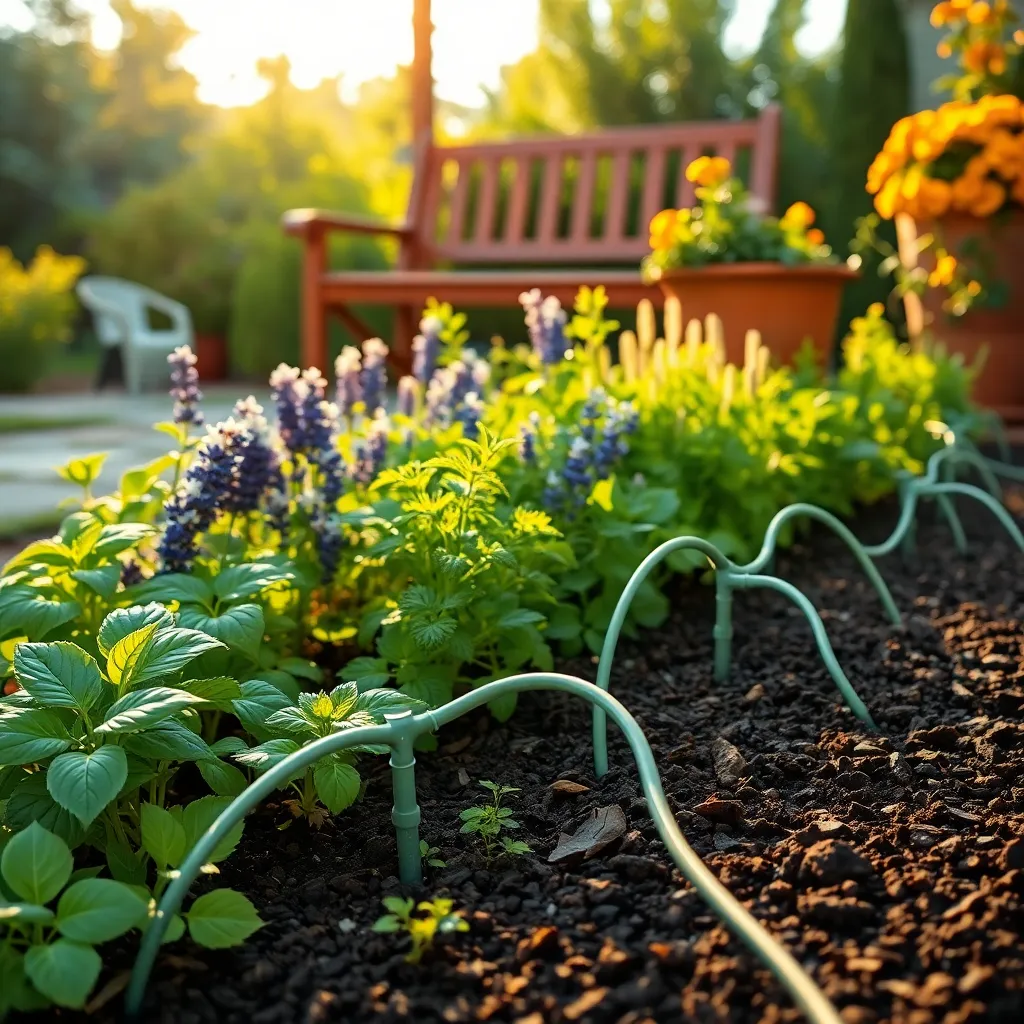
Integrating a drip irrigation system into your herb garden is an excellent way to enhance water efficiency. This method delivers water directly to the plant roots, minimizing evaporation and ensuring your herbs receive consistent moisture.
Setting up a drip irrigation system can be straightforward and does not require advanced skills. Start by determining the layout of your garden and purchasing a basic drip kit, which usually includes tubing, emitters, and connectors.
Installation involves laying tubing along the rows of herbs and placing emitters near each plant. Make sure to adjust the emitters according to each herb’s water needs; for example, thyme and rosemary require less frequent watering compared to basil and mint.
Regular maintenance of your drip system is crucial to its success. Check for clogs in the emitters and ensure that the tubing is securely connected, especially after seasonal changes or heavy winds.
Start with Quality Herb Seeds
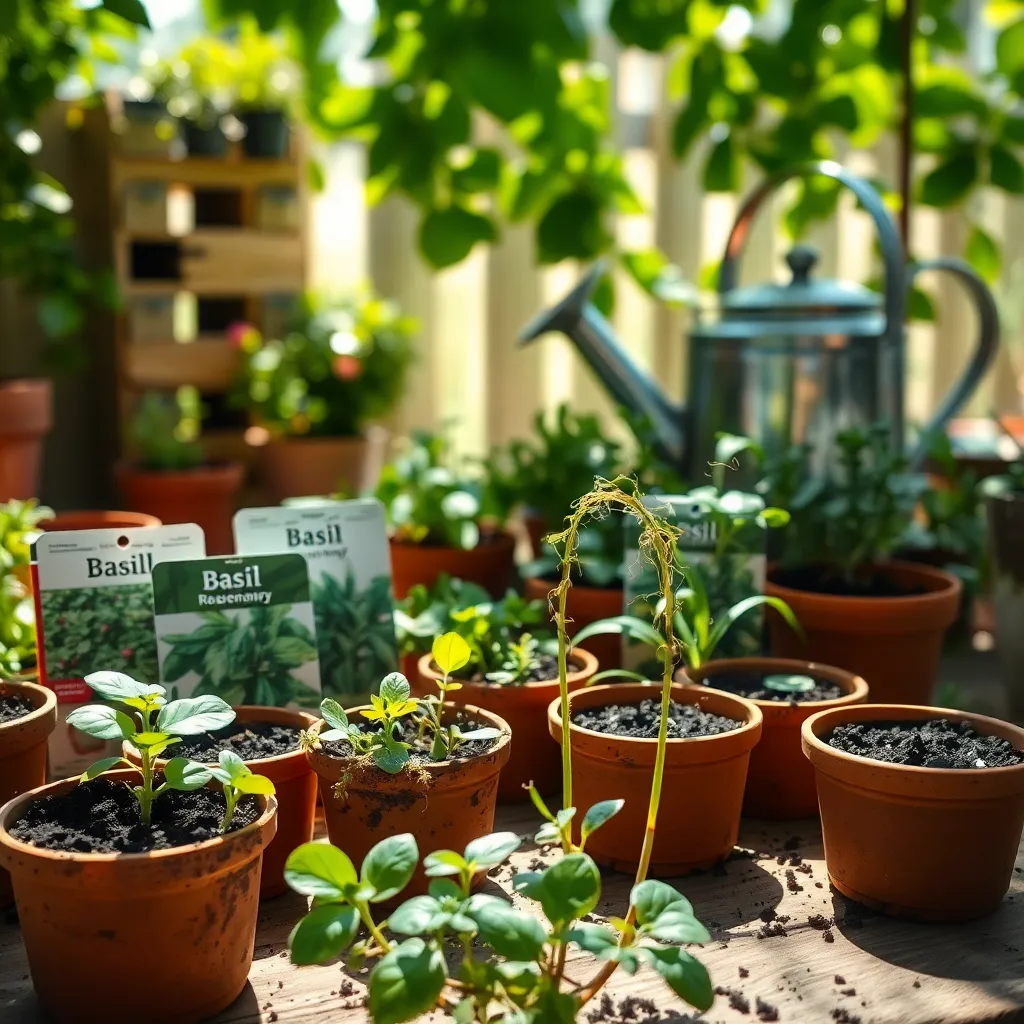
Starting your herb garden with high-quality seeds is crucial for a successful harvest. Look for seeds from reputable suppliers that guarantee high germination rates and are free from diseases.
When choosing seeds, select varieties that suit your local climate and growing conditions. This ensures that your herbs will thrive, whether you’re growing them indoors on a windowsill or outdoors in a garden bed.
Begin by sowing seeds in a fine, well-draining potting mix to give them the best start. A potting mix with a blend of peat moss, vermiculite, and perlite works well to maintain moisture without becoming waterlogged.
For optimal growth, place your seed trays in a warm, sunny location where they receive at least 6 hours of sunlight per day. If natural sunlight is insufficient, consider using a grow light to supplement.
Label Herbs for Easy Identification
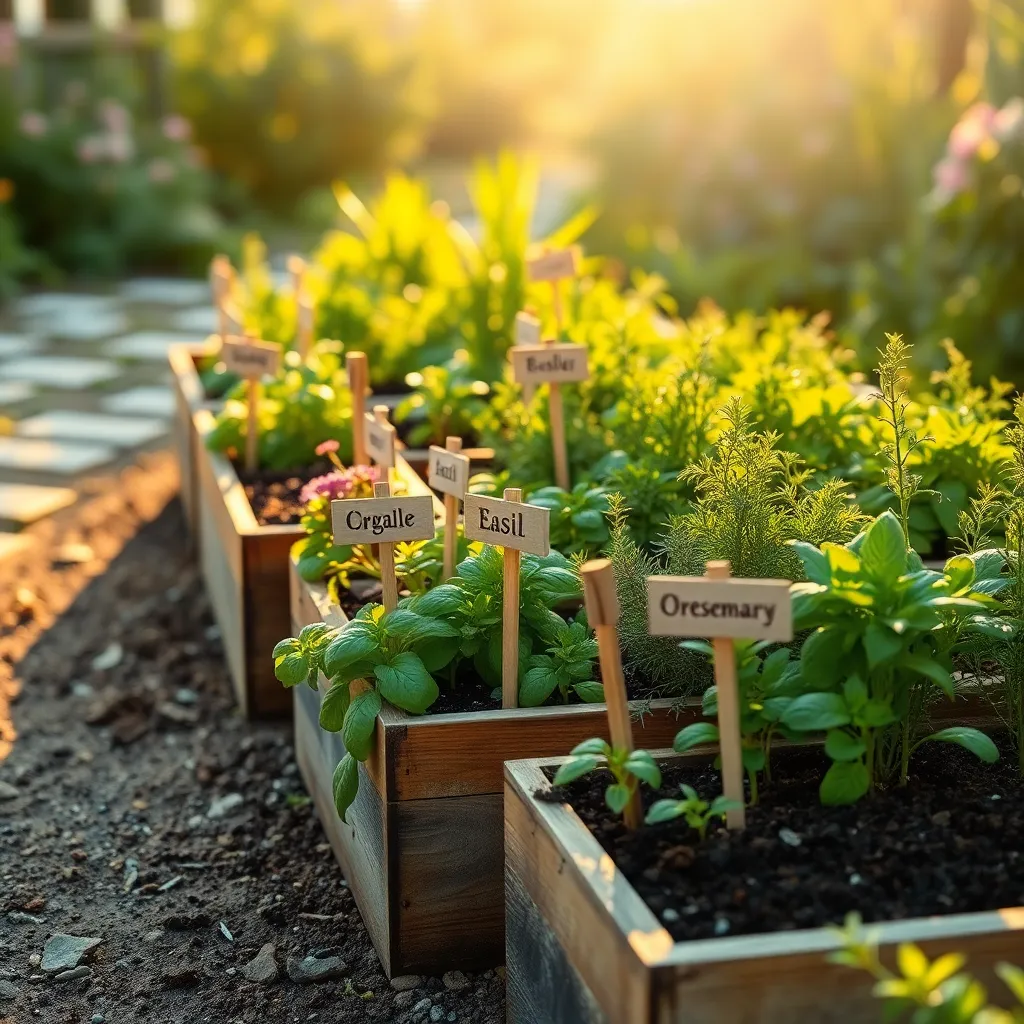
Labeling your herbs is an essential step for maintaining an organized and efficient herb garden. Using durable, weather-resistant labels ensures that you can easily identify your herbs even after rain or sun exposure.
Consider using materials like slate, metal, or plastic for your labels, as these can withstand outdoor conditions for extended periods. Write the herb’s name clearly using a permanent marker or paint pen to prevent fading over time.
For a touch of creativity, color-code your labels based on the type of herb, such as culinary, medicinal, or aromatic. This method not only adds visual appeal but also makes it easier to locate specific herbs when you need them.
Advanced gardeners can include additional details on the labels, such as planting dates or watering needs. This practice allows you to keep track of each plant’s specific requirements and adapt your care routine accordingly.
Conclusion: Growing Success with These Plants
In nurturing your relationship, much like cultivating an herb garden, attention to detail and care yield the best results. We’ve explored 11 essential tips: understanding your partner’s love language, practicing daily affirmations, making time for quality communication, and resolving conflicts with empathy. We’ve also discussed the importance of shared goals, maintaining a balance between individuality and togetherness, prioritizing trust, and fostering mutual respect. Additionally, we emphasized the benefits of shared activities, expressing gratitude, and keeping the romance alive with thoughtful gestures.
To put these insights into action, start with one simple step today: initiate a meaningful conversation with your partner about what makes them feel most loved and valued. This foundation will strengthen your connection and pave the way for more open dialogue.
Remember to save this article to your bookmarks for quick access to these practical tips whenever you need a refresher. As you invest in your relationship, know that these small, intentional actions can lead to a thriving partnership filled with love and understanding. Embrace this journey with optimism, knowing that with each effort, you are building a resilient and successful relationship for the future.

